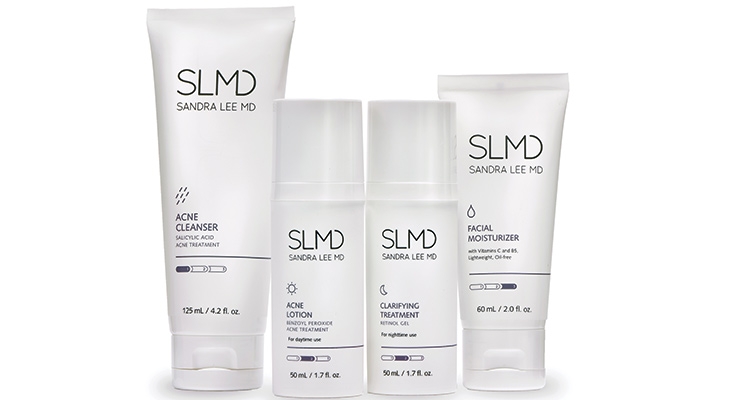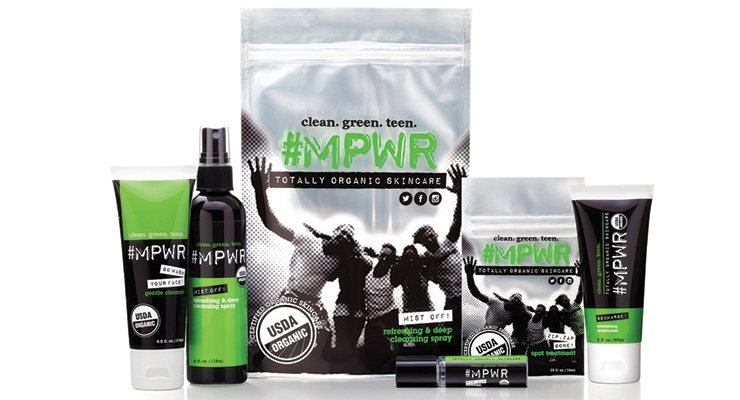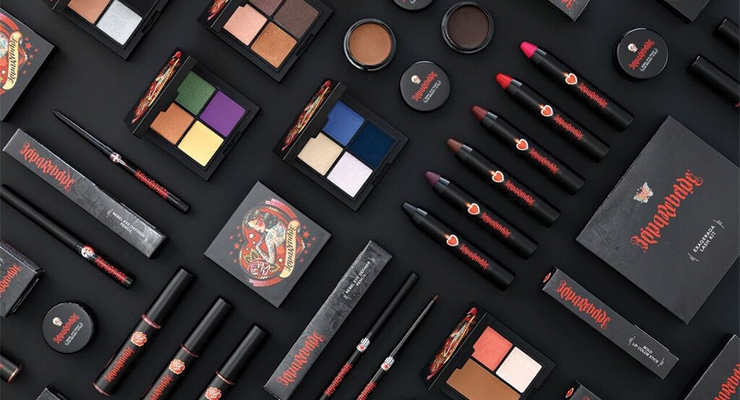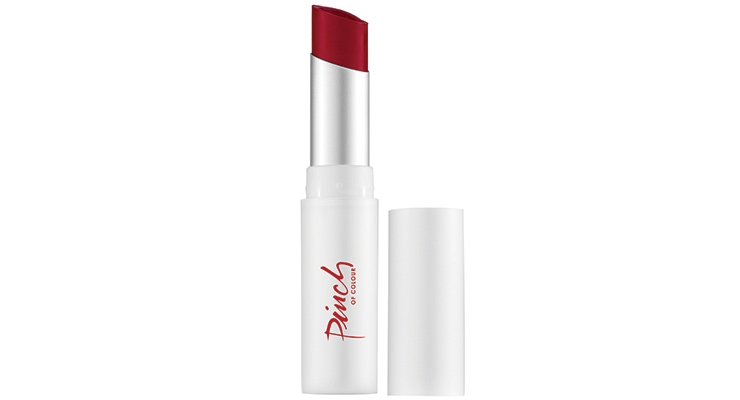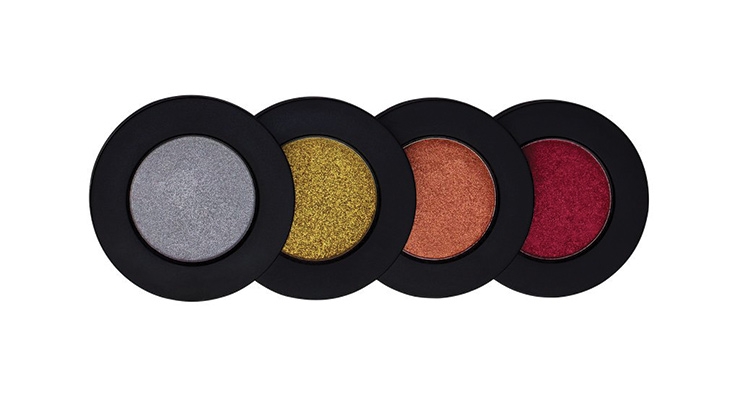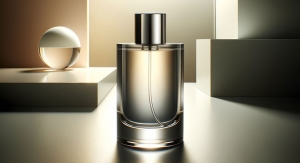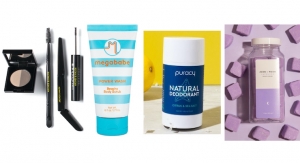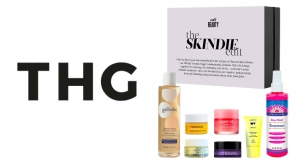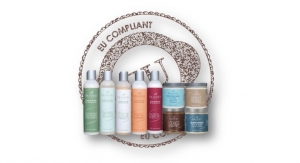Joanna Cosgrove, Contributing Editor11.01.17
Independent beauty brands may not have the deep resources of global brands, but what they lack in capital, they more than make up for with creativity, innovation and contagious entrepreneurial spirit. Many start out with a clear vision of their brand but often benefit from the expertise of formulators and packagers to help bring their concepts to fruition.
One of the biggest factors shaping the indie beauty segment is social media, and to a similar degree, social media “influencers”—celebrities, makeup artists and want-to-be celebrities who’ve developed a following for championing specific products and brands, or who offer practical product reviews and real-life makeup, skincare and haircare product tutorials on social media platforms like Instagram, YouTube and Facebook. New brands are often sparked by influencers because they have the savvy to articulate exactly what they want from a product and if it doesn’t already exist, it can be created and promoted using their built-in fan base.
“Consumers are tired of having big companies talk at them and tell them what products to buy. Indie brands create communities that often have a voice in what the brand does,” says Karen Young, CEO of New York and Paris-based The Young Group. “They want ‘clean’, small and transparent [and] they want a real person with a story they can relate to.”
“Social media is one of the great opportunities and challenges that this industry has experienced in the last five years,” comments Henri Tinchant, founder and president of Asquan Group, Los Angeles, CA. “On one hand, the opportunity [is] that just about anyone with exposure can have a shot at starting a brand. On the other hand, the challenge [of] development times and production lead times need to be seriously shortened as indie brands do not want to wait as long as the majors have been used to doing.”
In addition to the social media influence, Young says an entire new segment of the industry has also emerged: incubator organizations that support indie brands by offering guidance, providing resources, and connecting brands with financing and retailers.
Young says the influx of indie beauty brands is “exhilarating” with no slow-down in sight, but the success rate is steep. “Only 20% of them will last two years, so it’s a numbers game,” she says.
The indie landscape is becoming quite crowded and I’m not sure how many more the big guys are willing to gobble up until they integrate the current crop of acquisitions.
“It takes years to build a brand,” she cautions. “The consumer has so many shopping options and there’s very little brand loyalty. We’ve trained her to shop for ‘new.’”
Young frequently works with indie brands and aside from financing, she says the biggest challenge they typically face is being disciplined in their positioning. “The target audience must be small and well defined,” she advises. “The focus must be tight and specific or it feels as though the story is all over the place.”
And it’s in brand definition and product positioning where packaging providers stand to offer the most helpful insights and influence. “We know how important packaging is in presenting a brand,” Young says. “Online and in certain distribution channels, it’s the packaging that is the spokesperson. It can make or break that first sale.”
Young explains that while consumers want environmentally responsible materials and less packaging, good packaging isn’t cheap and consumers don’t take kindly to shortcuts. “I encourage indie brands not to scrimp here,” she says. “Generally speaking, the package costs a good deal more than the product, which is often a hard lesson for start-ups to understand. Today’s packaging must be Instagrammable!”
Young says many indie brands are succeeding in getting it all right. MPWR is an organic skincare line for teens, and Reina Rebelde, is a color cosmetics line for young Latinas—both brand’s founders worked closely with Young during their development phases. “Their package designs are superb, the formulas are excellent and their positioning is very disciplined and succinct,” she says, spotlighting two additional brands she did not work with but admires just the same: Milk MakeUp and Pinch of Colour, which combine great products and strong points of view.
Navigating Challenges
Indie packaging doesn’t need to be expensive to create a buzz-worthy look, thanks to the many affordable decorating options suppliers have at their disposal. “Packaging needs to be somewhat edgy to even get noticed—high creativity and the willingness to take some risks is a must,” says Rick Weisbrod, EVP global operations, World Wide Packaging (WWP), Florham Park, NJ. “People aren’t necessarily looking for budget items, but items that have a story around them and a point of difference. People scan sites so quickly and you need them to stop and think about the product you’re trying to sell them.”
Thinly stretched budgets often require out-of-the-box packaging solutions, especially when it comes to the issue of Minimum Order Quantities (MOQs). “MOQs are a huge obstacle for indie brands,” says Kristen O’Connell, director of marketing and product development, Roberts Beauty, Chatsworth, CA. “Lack of volume forces indie brands to select from stock packaging, which can be a real limiter in terms of being able to differentiate your brand and stay true to the vision.”
For new brands limited to working with stock packaging, O’Connell advises an investment in artwork to help make the package their own. “Invest in a great graphic artist, invest the time to understand what decoration techniques are possible and use artwork to help create a statement unique to your brand,” she says. “There are many emerging brands with similar products who are forced to select the same packaging, make sure you don’t look like everything else—make your artwork outstanding.”
Roberts Beauty worked with Melt Cosmetics to create a customized package for the brand’s Eyeshadow Stack palettes and singles. “We reinvented a patented magnetic hinge system in the size they envisioned for their brand, molding the parts with an in-mold matte finish to give them the finish they desired,” she explains. “The material is ABS, the well size is 37.4mm and the deco is a one-pass silk screen.”
The result is simple yet upscale, and emphasizes the product within.
“Gone are the days of the 50- or 100m piece minimums, says Jim Slowey, marketing manager, Baralan USA, Richmond Hill, NY. “Many suppliers are now allowing for 5- or 10m piece orders with the hope of creating a loyalty that will pay off with the brand’s future success.”
Slowey says there’s been a noticeable shift toward classic shapes and packages with a focus on colors and decoration to catch the consumer’s eye. “‘Bling’ has come and gone and the organic look and sustainable packaging is what we see more and more of,” he says. Baralan recently started stocking a line of Opal jars and bottles that have garnered the attention of the indie market. “This brings back a sort of nostalgia and cleanness to the packaging.”
Exploring Options
Compromise is often key to arriving at a packaging solution that both meets a brand’s design ideals and budget constraints. “Unless suppliers are willing to take a chance, indies often have to compromise their creativity,” says Asquan Group’s Tinchant. “Working with indie brands requires a very different approach. It’s all about improvisation, advice and sharing of expertise, in short service and protection.”
While a custom-designed package isn’t always feasible, packaging providers can pitch alternatives that still fit the bill. “One example is paper palettes, which have been a great help as they require little or no tooling and offer great decoration possibilities on the printing front,” Tinchant notes. “You will also see that indies mostly start with just one or max, two items in order to be able to scale gradually and in-line with revenue and cash flow.”
Asquan works to leanly and reactively absorb as much of the cost as possible, providing “back-end operations” like design, engineering and development to free up emerging brands to do what they do best—promote and build their brands on the front end. All of this, he says, goes a long way toward forging a long and loyal partnership with the brand.
Chris James, VP sales and marketing, East Hill Industries Inc., Carrollton, TX, says stock options are well-suited for new ventures because they can be sold in smaller quantities and are the perfect stepping stones for scaling up later on. “[Stock packaging] allows the brand to only buy as few as needed to get them launched and they can do small and quick re-orders when needed. It also helps by not tying up too much cash flow in inventory,” he says, noting that East Hill offers in-house silk screening and labeling options to help brands make stock packages uniquely theirs. “[Customizing] can be as simple as flood printing a white tube to give it a custom color look or doing a full 360-degree label on an airless bottle or jar. Our goal is to help the brand build their sales up enough so we can then help transition them to a truly custom package in the future.”
SLMD Skincare approached East Hill last December 2016 as a startup wanting to launch four acne treatment products in standard and starter kit formats. East Hill produced round 50ml PP airless bottles at its China factory then skirted the minimum print quantity issue at the factory by shipping them stateside with no decoration and printed them domestically at just over 2,000 per SKU. The other product SKUs were housed in in-stock, five-layer COEX tubes in .5-, 2, 4-oz sizes, plus 1oz tubes with airless pumps that were silk screened in house, all on time for the designated launch.
“As their sales are direct via online, it’s very difficult to forecast demand early on, thus they needed a packaging solution that could be produced quickly to fill orders as needed,” James says. “We have been able to do reorders for all the tubes with an average lead-time of two weeks, allowing them to run lean with a limited inventory of finished goods on hand.
“As their orders have grown, we are now in the process of transitioning them from in-stock packaging to custom produced packaging,” he adds. “We are now running larger custom orders for them which has allowed them to reduce their overall packaging cost, but they continue to have the same look they launched with.”
Cultivating Partnerships
Developing relationships with trustworthy packaging suppliers is advantageous for young start-ups. “For years, larger established companies perceived us and our competitors as trading companies or distributors that only added cost to the supply chain,” comments Walter Dwyer, president, Cosmopak USA, Port Washington, NY. “They undervalued or didn’t understand what services we provide and felt a lot of their in-house resources could do what we do.”
Dwyer has learned that flexibility, speed and integration are critical to execution and says a small, experienced team such as the one at Cosmopak heightens efficiency. “New start-up companies seem to understand more simply the benefit of Cosmopak and use us as their sourcing and execution partner,” he says. “They don’t try and replicate the resources we have, which lowers their overhead dramatically, and they rely on our design, sourcing, purchasing and logistical services to get their product out quickly. Larger established brands just can’t move at that pace and therefore the gaps in the market are being filled by new brands not old established brands.”
WWP’s Weisbrod says it’s more than just providing packaging and makeup, it about helping brands develop their story to tell the public. “This could be in the form of creative packaging, formulas, special ingredients, or marketing claims,” he says. “WWP becomes part of their infrastructure and provides services that small startup companies can’t provide themselves.”
“We have made a strong effort to satisfy the [indie segment’s] needs by creating more stock packaging options that can be customized to provide the look and technical properties that they desire,” says Mike Warford, director of sales, ABA Packaging Corp., Holtsville, NY, pointing to ABA’s new line of black glass bottle and jar options that was launched specifically in response to the requests the company received from indie beauty companies. “Package design and material choices are critical for the indie brands for proper containment, compatibility and presentation,” he says. “If these key factors can be satisfied with lower price options, it’s a win-win for all.”
One of the biggest factors shaping the indie beauty segment is social media, and to a similar degree, social media “influencers”—celebrities, makeup artists and want-to-be celebrities who’ve developed a following for championing specific products and brands, or who offer practical product reviews and real-life makeup, skincare and haircare product tutorials on social media platforms like Instagram, YouTube and Facebook. New brands are often sparked by influencers because they have the savvy to articulate exactly what they want from a product and if it doesn’t already exist, it can be created and promoted using their built-in fan base.
“Consumers are tired of having big companies talk at them and tell them what products to buy. Indie brands create communities that often have a voice in what the brand does,” says Karen Young, CEO of New York and Paris-based The Young Group. “They want ‘clean’, small and transparent [and] they want a real person with a story they can relate to.”
“Social media is one of the great opportunities and challenges that this industry has experienced in the last five years,” comments Henri Tinchant, founder and president of Asquan Group, Los Angeles, CA. “On one hand, the opportunity [is] that just about anyone with exposure can have a shot at starting a brand. On the other hand, the challenge [of] development times and production lead times need to be seriously shortened as indie brands do not want to wait as long as the majors have been used to doing.”
In addition to the social media influence, Young says an entire new segment of the industry has also emerged: incubator organizations that support indie brands by offering guidance, providing resources, and connecting brands with financing and retailers.
Young says the influx of indie beauty brands is “exhilarating” with no slow-down in sight, but the success rate is steep. “Only 20% of them will last two years, so it’s a numbers game,” she says.
The indie landscape is becoming quite crowded and I’m not sure how many more the big guys are willing to gobble up until they integrate the current crop of acquisitions.
“It takes years to build a brand,” she cautions. “The consumer has so many shopping options and there’s very little brand loyalty. We’ve trained her to shop for ‘new.’”
Young frequently works with indie brands and aside from financing, she says the biggest challenge they typically face is being disciplined in their positioning. “The target audience must be small and well defined,” she advises. “The focus must be tight and specific or it feels as though the story is all over the place.”
And it’s in brand definition and product positioning where packaging providers stand to offer the most helpful insights and influence. “We know how important packaging is in presenting a brand,” Young says. “Online and in certain distribution channels, it’s the packaging that is the spokesperson. It can make or break that first sale.”
Young explains that while consumers want environmentally responsible materials and less packaging, good packaging isn’t cheap and consumers don’t take kindly to shortcuts. “I encourage indie brands not to scrimp here,” she says. “Generally speaking, the package costs a good deal more than the product, which is often a hard lesson for start-ups to understand. Today’s packaging must be Instagrammable!”
Young says many indie brands are succeeding in getting it all right. MPWR is an organic skincare line for teens, and Reina Rebelde, is a color cosmetics line for young Latinas—both brand’s founders worked closely with Young during their development phases. “Their package designs are superb, the formulas are excellent and their positioning is very disciplined and succinct,” she says, spotlighting two additional brands she did not work with but admires just the same: Milk MakeUp and Pinch of Colour, which combine great products and strong points of view.
Navigating Challenges
Indie packaging doesn’t need to be expensive to create a buzz-worthy look, thanks to the many affordable decorating options suppliers have at their disposal. “Packaging needs to be somewhat edgy to even get noticed—high creativity and the willingness to take some risks is a must,” says Rick Weisbrod, EVP global operations, World Wide Packaging (WWP), Florham Park, NJ. “People aren’t necessarily looking for budget items, but items that have a story around them and a point of difference. People scan sites so quickly and you need them to stop and think about the product you’re trying to sell them.”
Thinly stretched budgets often require out-of-the-box packaging solutions, especially when it comes to the issue of Minimum Order Quantities (MOQs). “MOQs are a huge obstacle for indie brands,” says Kristen O’Connell, director of marketing and product development, Roberts Beauty, Chatsworth, CA. “Lack of volume forces indie brands to select from stock packaging, which can be a real limiter in terms of being able to differentiate your brand and stay true to the vision.”
For new brands limited to working with stock packaging, O’Connell advises an investment in artwork to help make the package their own. “Invest in a great graphic artist, invest the time to understand what decoration techniques are possible and use artwork to help create a statement unique to your brand,” she says. “There are many emerging brands with similar products who are forced to select the same packaging, make sure you don’t look like everything else—make your artwork outstanding.”
Roberts Beauty worked with Melt Cosmetics to create a customized package for the brand’s Eyeshadow Stack palettes and singles. “We reinvented a patented magnetic hinge system in the size they envisioned for their brand, molding the parts with an in-mold matte finish to give them the finish they desired,” she explains. “The material is ABS, the well size is 37.4mm and the deco is a one-pass silk screen.”
The result is simple yet upscale, and emphasizes the product within.
“Gone are the days of the 50- or 100m piece minimums, says Jim Slowey, marketing manager, Baralan USA, Richmond Hill, NY. “Many suppliers are now allowing for 5- or 10m piece orders with the hope of creating a loyalty that will pay off with the brand’s future success.”
Slowey says there’s been a noticeable shift toward classic shapes and packages with a focus on colors and decoration to catch the consumer’s eye. “‘Bling’ has come and gone and the organic look and sustainable packaging is what we see more and more of,” he says. Baralan recently started stocking a line of Opal jars and bottles that have garnered the attention of the indie market. “This brings back a sort of nostalgia and cleanness to the packaging.”
Exploring Options
Compromise is often key to arriving at a packaging solution that both meets a brand’s design ideals and budget constraints. “Unless suppliers are willing to take a chance, indies often have to compromise their creativity,” says Asquan Group’s Tinchant. “Working with indie brands requires a very different approach. It’s all about improvisation, advice and sharing of expertise, in short service and protection.”
While a custom-designed package isn’t always feasible, packaging providers can pitch alternatives that still fit the bill. “One example is paper palettes, which have been a great help as they require little or no tooling and offer great decoration possibilities on the printing front,” Tinchant notes. “You will also see that indies mostly start with just one or max, two items in order to be able to scale gradually and in-line with revenue and cash flow.”
Asquan works to leanly and reactively absorb as much of the cost as possible, providing “back-end operations” like design, engineering and development to free up emerging brands to do what they do best—promote and build their brands on the front end. All of this, he says, goes a long way toward forging a long and loyal partnership with the brand.
Chris James, VP sales and marketing, East Hill Industries Inc., Carrollton, TX, says stock options are well-suited for new ventures because they can be sold in smaller quantities and are the perfect stepping stones for scaling up later on. “[Stock packaging] allows the brand to only buy as few as needed to get them launched and they can do small and quick re-orders when needed. It also helps by not tying up too much cash flow in inventory,” he says, noting that East Hill offers in-house silk screening and labeling options to help brands make stock packages uniquely theirs. “[Customizing] can be as simple as flood printing a white tube to give it a custom color look or doing a full 360-degree label on an airless bottle or jar. Our goal is to help the brand build their sales up enough so we can then help transition them to a truly custom package in the future.”
SLMD Skincare approached East Hill last December 2016 as a startup wanting to launch four acne treatment products in standard and starter kit formats. East Hill produced round 50ml PP airless bottles at its China factory then skirted the minimum print quantity issue at the factory by shipping them stateside with no decoration and printed them domestically at just over 2,000 per SKU. The other product SKUs were housed in in-stock, five-layer COEX tubes in .5-, 2, 4-oz sizes, plus 1oz tubes with airless pumps that were silk screened in house, all on time for the designated launch.
“As their sales are direct via online, it’s very difficult to forecast demand early on, thus they needed a packaging solution that could be produced quickly to fill orders as needed,” James says. “We have been able to do reorders for all the tubes with an average lead-time of two weeks, allowing them to run lean with a limited inventory of finished goods on hand.
“As their orders have grown, we are now in the process of transitioning them from in-stock packaging to custom produced packaging,” he adds. “We are now running larger custom orders for them which has allowed them to reduce their overall packaging cost, but they continue to have the same look they launched with.”
Cultivating Partnerships
Developing relationships with trustworthy packaging suppliers is advantageous for young start-ups. “For years, larger established companies perceived us and our competitors as trading companies or distributors that only added cost to the supply chain,” comments Walter Dwyer, president, Cosmopak USA, Port Washington, NY. “They undervalued or didn’t understand what services we provide and felt a lot of their in-house resources could do what we do.”
Dwyer has learned that flexibility, speed and integration are critical to execution and says a small, experienced team such as the one at Cosmopak heightens efficiency. “New start-up companies seem to understand more simply the benefit of Cosmopak and use us as their sourcing and execution partner,” he says. “They don’t try and replicate the resources we have, which lowers their overhead dramatically, and they rely on our design, sourcing, purchasing and logistical services to get their product out quickly. Larger established brands just can’t move at that pace and therefore the gaps in the market are being filled by new brands not old established brands.”
WWP’s Weisbrod says it’s more than just providing packaging and makeup, it about helping brands develop their story to tell the public. “This could be in the form of creative packaging, formulas, special ingredients, or marketing claims,” he says. “WWP becomes part of their infrastructure and provides services that small startup companies can’t provide themselves.”
“We have made a strong effort to satisfy the [indie segment’s] needs by creating more stock packaging options that can be customized to provide the look and technical properties that they desire,” says Mike Warford, director of sales, ABA Packaging Corp., Holtsville, NY, pointing to ABA’s new line of black glass bottle and jar options that was launched specifically in response to the requests the company received from indie beauty companies. “Package design and material choices are critical for the indie brands for proper containment, compatibility and presentation,” he says. “If these key factors can be satisfied with lower price options, it’s a win-win for all.”

